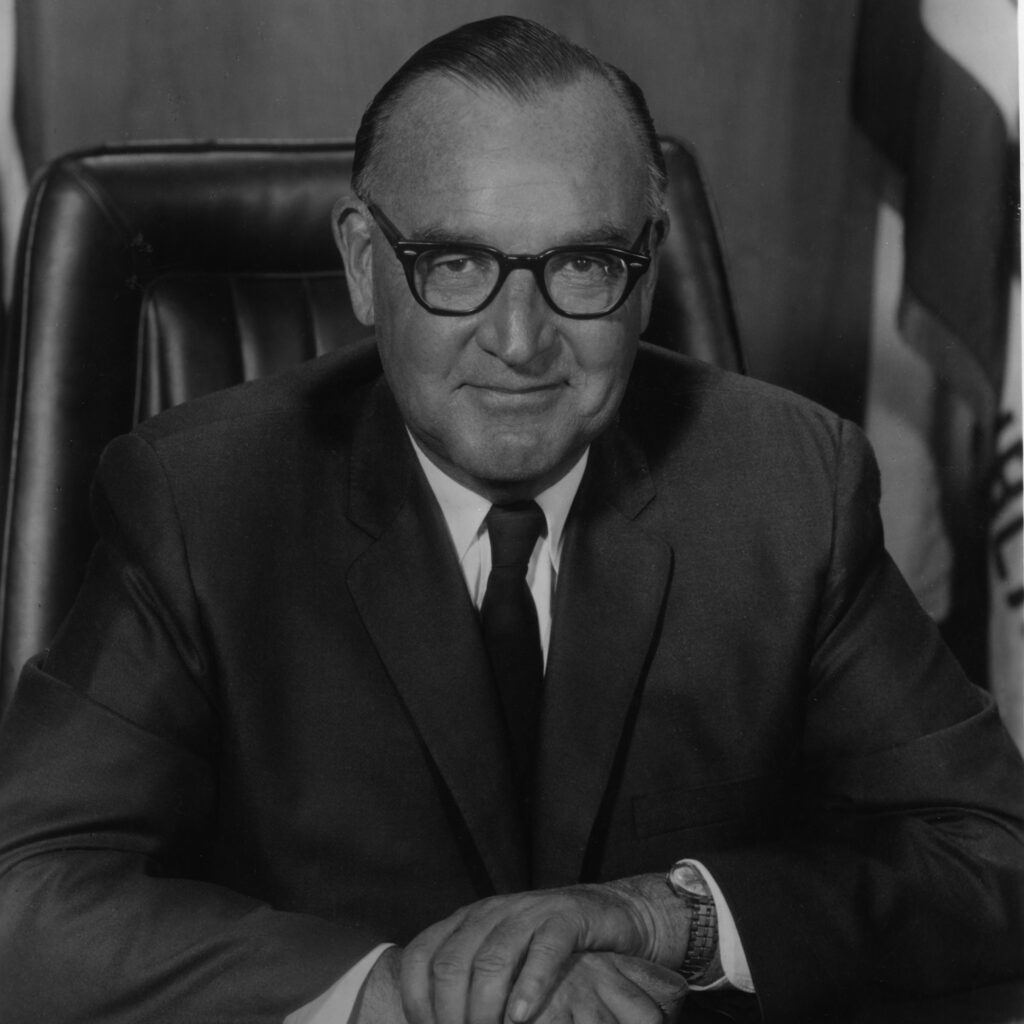Edmund G. “Pat” Brown

Public Service
(1905 – 1996)
Achievements
Biography current as of induction in 2010
Governor Edmund G. “Pat” Brown ushered in a golden age, making California famous for having the biggest water system, the best higher education, the longest highways, and an economy exceeding that of nations.
Born in San Francisco to a working class family, Brown worked days and studied nights to become a lawyer. Though successful, he dreamed of holding public office, and eventually won election as San Francisco District Attorney in 1943. In assembling his staff, he appointed the city’s first black assistant district attorney, the first Chinese deputy district attorney, and more women assistant district attorneys than any previous DA. His next step up the ladder of government was election as state Attorney General in 1950. Under his guidance, the department issued opinions advancing minority rights and vigorously fought vice, political corruption, and organized crime.
Elected governor in 1958, during his two terms Brown fought hard to achieve visionary legislation that introduced equal opportunity to the workplace; forbade racial discrimination in housing; and provided access to a college education for every Californian. He also presided over an unprecedented expansion of the freeway system and the construction of seven new state colleges and universities. Perhaps his greatest achievement was the State Water Project, a massive network of dams, reservoirs and canals to hold and move water across the state, a system we continue to rely on today.
After leaving office in 1967, Brown returned to the law. He worked as an attorney into his eighties, while enjoying the successes of his four children, two of whom followed him to statewide elected office –Jerry as Secretary of State, Governor, and Attorney General; and Kathleen as Treasurer. In 1980 he created the Edmund G. “Pat” Brown Institute of Government Affairs as a vehicle for discussions on California’s fiscal health. The Institute continues to reflect his policy interests and accomplishments in infrastructure development, civil rights and social justice, and environmental sustainability.
Today, over forty years after he left office, Brown’s legacy is all around us, in our social programs, our aqueducts and our freeways, and our colleges and universities.
View more inductees from the 5th class, inducted in 2010.
